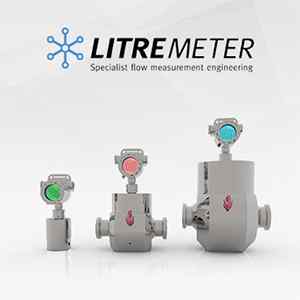Fluid Dynamics in Action: Pumps & Pumping Equipment for Industrial Automation

Introduction:
Fluid dynamics plays a crucial role in industrial automation, especially in the context of pumps and pumping equipment. These devices are essential for transferring liquids, gases, or slurries within various industrial processes. Understanding the principles of fluid dynamics is key to optimizing the performance, efficiency, and reliability of pumps in industrial settings. This article delves into the intricacies of fluid dynamics as applied to pumps and pumping equipment, exploring their functionality, types, applications, and advancements in industrial automation.
Understanding Fluid Dynamics in Pumping Systems
Fluid dynamics is the study of fluids in motion, encompassing the behavior of liquids and gases under various conditions. In pumping systems, fluid dynamics governs the flow rate, pressure, velocity, and energy transfer within the system. Key principles include Bernoulli's equation, which relates fluid pressure, velocity, and elevation, as well as the conservation of mass and energy principles.
Types of Pumps and Their Operating Principles
1. Centrifugal Pumps: These pumps utilize centrifugal force to impart kinetic energy to the fluid, increasing its velocity and creating pressure. They are commonly used in water supply systems, chemical processing, HVAC systems, and wastewater treatment plants.
2. Positive Displacement Pumps: Unlike centrifugal pumps, positive displacement pumps trap a specific volume of fluid and then force it into the discharge pipe. This results in a steady flow rate regardless of system pressure. Examples include piston pumps, gear pumps, diaphragm pumps, and peristaltic pumps.
3. Diaphragm Pumps: Diaphragm pumps operate by flexing a diaphragm to create a vacuum that draws in fluid, which is then expelled when the diaphragm contracts. They are suitable for handling corrosive or viscous fluids and are used in industries such as pharmaceuticals, food processing, and chemical manufacturing.
4. Gear Pumps: Gear pumps use intermeshing gears to move fluid from the inlet to the outlet.
They offer precise flow control and are often employed in hydraulic systems, lubrication systems, and fuel transfer applications.
5. Centrifugal vs. Positive Displacement Pumps: A comparison of these two pump types reveals that centrifugal pumps are more suited for high-flow, low-pressure applications, while positive displacement pumps excel in delivering constant flow rates against varying pressures.
Applications of Pumping Equipment in Industrial Automation
Pumps play a critical role across various industries, facilitating the efficient transfer, mixing, and handling of liquids in diverse processes. In chemical processing, pumps are indispensable for transferring chemicals, acids, and solvents with precision, ensuring accurate dosing and mixing crucial for manufacturing operations. The oil and gas industry heavily relies on pumps for extracting crude oil, transporting it across pipelines, and refining processes. Additionally, pumps are integral in gas compression and injection processes, supporting the industry's operations.
Water and wastewater management heavily depends on pumps for multiple tasks. Water treatment plants utilize pumps to supply clean water to communities, handle wastewater effectively, and manage sludge pumping for environmental safety. In the food and beverage production sector, pumps are essential for conveying various liquids such as juices, syrups, dairy products, and sauces during processing. These pumps ensure the smooth flow and accurate dosing required for consistent product quality.
Pharmaceutical manufacturing relies on pumping equipment for precise dispensing of pharmaceutical ingredients, formulation processes, and sterile liquid handling. The stringent requirements of pharmaceutical production demand pumps that can maintain high levels of accuracy, hygiene, and reliability to ensure product safety and efficacy. In all these industries, pumps and pumping equipment are indispensable components that contribute significantly to operational efficiency, product quality, and regulatory compliance.
Advancements in Pumping Technology
Recent advancements in pumping technology have revolutionized the efficiency and sustainability of industrial pumping systems. Variable Frequency Drives (VFDs) have emerged as a game-changer by optimizing pump speed in real-time based on demand, thereby reducing energy consumption and extending equipment lifespan. This adaptive control mechanism ensures that pumps operate at optimal levels, matching the required flow rates and pressure conditions precisely.
Smart Pumping Systems represent another significant leap in pumping technology, integrating sensors, IoT connectivity, and predictive analytics. These systems enable remote monitoring of pump performance, predictive maintenance scheduling based on real-time data analysis, and overall optimization of pump operations. By proactively addressing potential issues and optimizing performance parameters, smart pumping systems contribute to increased reliability, reduced downtime, and improved operational efficiency.
Manufacturers are also focusing on energy-efficient designs for pumps, incorporating features such as improved hydraulic efficiencies, reduced friction losses, and optimized impeller designs. These advancements result in significant energy savings while maintaining or even enhancing pump performance. Energy-efficient pumps not only reduce operational costs but also contribute to environmental sustainability by lowering overall energy consumption.
Material innovations play a crucial role in enhancing pump durability and resistance to corrosion and wear. Advanced materials such as ceramics, composites, and specialized coatings are being utilized to improve pump reliability, extend service life, and reduce maintenance requirements. These materials offer superior properties that withstand harsh operating conditions, ensuring long-term performance and minimizing downtime due to component failure.
Collectively, these advancements in pumping technology signify a shift towards more intelligent, efficient, and durable pumping systems. By leveraging VFDs, smart pumping systems, energy-efficient designs, and innovative materials, industries can achieve substantial improvements in pump performance, reliability, and sustainability, contributing to overall operational excellence and cost savings.
Conclusion
Fluid dynamics is the cornerstone of efficient and reliable pumping systems in industrial automation. By leveraging the principles of fluid dynamics, selecting the right pump type for specific applications, and embracing technological advancements, industries can achieve enhanced productivity, cost savings, and environmental sustainability in their pumping operations. As automation continues to evolve, pumps and pumping equipment will remain integral to fluid handling processes across various sectors.







